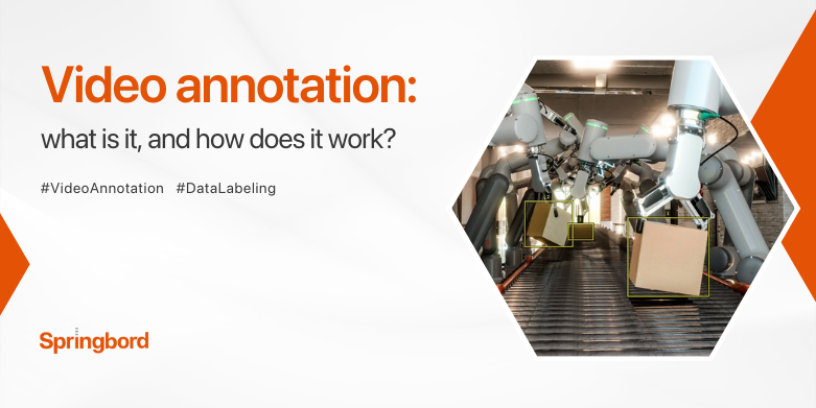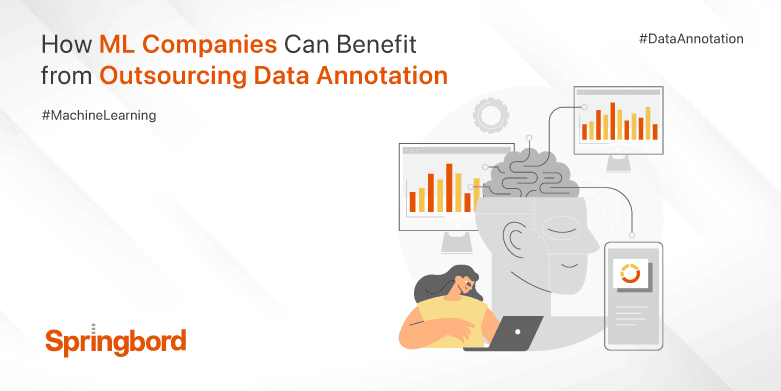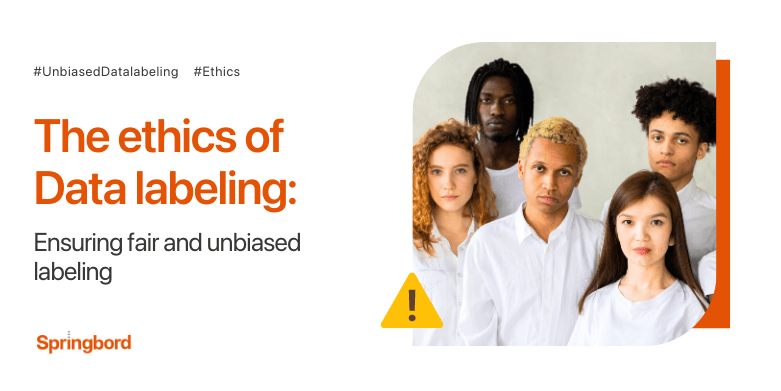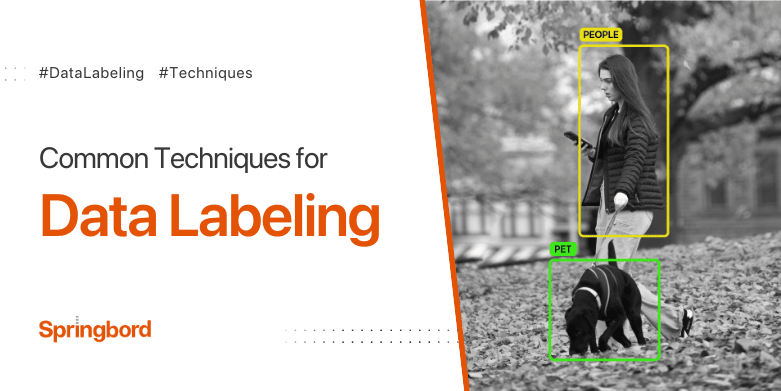 Read time 8 min
Read time 8 minVideo annotation is crucial in various fields, including computer vision and machine learning. Video annotation refers to the process of annotations, or metadata, to video data, enabling machines to accurately comprehend and analyse visual content.
Video annotation facilitates the development and training of algorithms and models by providing annotations such as object tracking, activity recognition, or scene segmentation. In this article, we will explore what video annotation is, its significance, and how it functions in detail.
What is Video Annotation?
Video annotation adds labels, annotations, or metadata to video data, enhancing its understanding and analysis by machines. Video annotation involves tagging it with information on the scenes, characters, and events.
These annotations allow for accurate recognition, tracking, and interpretation of visual features by providing context information to algorithms and models. Video annotation aids in the transformation of raw video data into useful insights by labelling items or regions of interest within frames or sequences.
Types of annotations in videos:
Many kinds of annotations may be applied to videos, and they all help with different aspects of analysis and interpretation. The following are examples of frequent video annotations:
- Object Tracking: First, there’s object tracking, which entails keeping tabs on the whereabouts of designated moving targets inside a video. This annotation is crucial for uses like surveillance, driverless vehicles, and action recognition.
- Activity Recognition: Annotating videos with activity recognition information involves finding and tagging instances of human activity. Annotation of this sort is useful in fields as diverse as video surveillance, sports analysis, and human-computer interaction.
- Scene Segmentation: Third, we have scene segmentation, which annotates a video into separate scenes or segments based on differences in setting, movement, or subject matter. Videos can be summarised, retrieved based on content, and edited using this annotation.
- Emotion Recognition: Identifying and labelling people’s emotional expressions or states in videos is the goal of emotion recognition annotations. This annotation benefits from affective computing, psychological study, and sentiment analysis.
- Speech Recognition: Speech recognition annotations involve transcribing and labelling spoken words or dialogues in a video. Video indexing, automatic subtitling, and transcription benefit greatly from this annotation.
Role of video annotation in various fields:
The importance of video annotation extends beyond just computer vision and machine learning. Key applications of video annotation include the following:
- Computer Vision: Annotating videos for machine learning improves their ability to comprehend and make sense of visual input. Video annotation aids object detection, tracking, and recognition algorithms by tagging objects, actions, and scenes. Video surveillance, object identification, and augmented reality are a few places where this is necessary.
- Machine Learning: Video annotation is the backbone of ML model training. Algorithms can learn patterns, recognise important aspects, and generate reliable predictions with annotated video data. Machine learning models can perform task recognition, object classification, and insight generation with the help of annotated films.
- Autonomous Systems: Thirdly, autonomous systems, such as self-driving cars and drones, rely heavily on video annotation. These systems can better sense their environments, identify potential barriers, and judge based on the annotated video data.
- Healthcare and Biomedical Research: In healthcare, video annotation aids in the analysis of medical imaging data, the tracking of the motion of anatomical structures, and the detection of problems. It’s useful for tracking a patient’s whereabouts and analysing their behaviour, which in turn aids in diagnosis, therapy, and study.
Process of Video Annotation
The video annotation process involves collecting and preprocessing video data, selecting and training annotators, utilising annotation tools and platforms, and establishing annotation guidelines and standards.
This methodical strategy guarantees annotations’ precision, uniformity, and dependability, allowing for efficient study and comprehension of video material.
Collection and preprocessing of video data:
Gathering and preparing video data is the first step in the video annotation process. Recorded security footage, publicly available movies, and bespoke video recordings are all viable options for gathering the necessary video data. Checking that the acquired video data syncs with the annotated project’s goals is crucial.
Converting the video to a different format, fine-tuning the resolution, and eliminating unwanted noise are all examples of preprocessing the video data. To guarantee consistency and compatibility across the dataset, this process seeks to standardise the video data and optimise it for annotation.
Selection and training of annotators:
One of the most important aspects of video annotation is the selection and training of annotators. Annotators are people whose job is to label clips in videos. They need to be well-versed in the necessary annotations for the project and have experience in the relevant domain.
To provide consistent and accurate annotations, it is necessary to train the annotators who will be responsible for creating them. Annotators can improve their productivity and output by attending training courses to familiarise them with annotation tools and procedures.
Annotation tools and platforms used:
There are numerous platforms and technologies designed specifically for the annotation of videos. Annotators can quickly and easily create annotations with the help of these tools due to their intuitive design.
Label-based tools, bounding box tools, keypoint tracking tools, and semantic segmentation tools are all examples of prevalent annotation tools.
Collaboration tools, version management, and quality assurance features are only some additional capabilities annotation platforms provide. To ensure scalability and streamline the annotation process, these platforms permit numerous annotators to work concurrently on the same dataset.
Annotation guidelines and standards:
To ensure that the annotations are both consistent and accurate, it is necessary to establish rules and standards. Annotation standards lay forth in great detail how to annotate various aspects of the video data, such as objects, actions, and events. They set norms, vocabulary, and best practices to maintain annotation consistency.
Standards for annotation are guidelines for measuring how well-annotated data performs. Inter-annotator agreement metrics, annotation completeness measures, and annotation accuracy benchmarks are examples of possible standards.
High-quality annotations that may be effectively used for downstream operations require strict adherence to annotation guidelines and standards.
Annotation standards and guidelines should be reviewed and updated regularly to account for new needs, clear up any confusion, and integrate input from annotators and subject matter experts.
Techniques and Tools for Video Annotation
Video annotation is labelling or tagging specific objects, events, or actions within a video to provide context and understanding. Computer vision, machine learning, surveillance, and video analytics rely heavily on it.
Video annotation helps computers understand what’s happening in them, which speeds up processes like facial recognition, motion detection, and behaviour analysis.
- Manual Annotation: Manual annotation is a traditional technique where human annotators watch videos and mark specific objects or events of interest. It is laborious and requires skilled human labour.
Manual annotation, on the other hand, provides highly accurate labelling and hence works well with high-quality training data. It’s commonly employed when automation is difficult or when human judgement is required to complete the annotation process.
- Semi-Automatic Annotation: Human knowledge and automated methods are used in semi-automatic annotation. In this method, computer vision techniques help annotators in their work. These algorithms can automatically detect and follow objects or events, cutting down on the need for manual annotation.
The correctness of the automated annotations is checked and corrected by a human annotator. Annotation using semi-automatic methods can be completed in a fraction of the time without sacrificing accuracy.
- Active Learning: Active learning is a method of picking the most illuminating samples for annotation, reducing the time spent on labelling. Active learning methods, as opposed to those that require manual annotation, iteratively choose only the samples from the video dataset that are particularly challenging to classify or ambiguous.
Following annotation, the model is retrained with the updated labelled data. By zeroing in on the most difficult situations, active learning helps optimize annotation efforts, reducing time and money spent on the process.
- Bounding Boxes and Object Tracking: Bounding boxes are one of the most commonly used annotation techniques. Video frames are annotated by tracing rectangles around relevant elements. These boxes depict the contents and limits of objects. Object tracking is a similar method that uses multi-frame annotations to determine an object’s motion.
Movements and interactions between objects throughout time can be recorded with its aid. Activities like object detection, tracking, and behavior analysis rely heavily on bounding box annotation and object tracking.
- Semantic Segmentation: Using semantic segmentation, annotators can label each pixel in a video frame with the category or object it belongs to. It’s helpful for scene interpretation, image-to-image translation, and video segmentation since it gives precise information about object boundaries.
Using semantic segmentation, algorithms can distinguish between overlapping or interdependent objects and conduct more nuanced analyses.
Challenges and Considerations in Video Annotation
Video annotation is crucial in various fields, such as computer vision, machine learning, and data analysis. Labelling and tagging specific objects, activities, or events inside a video requires automated systems to interpret the visual data correctly.
Annotating videos has many potential benefits, but there are also several obstacles and things to consider.
Subjectivity and inter-annotator variability:
The subjectivity of human annotators and the associated inter-annotator heterogeneity is one of the main obstacles in video annotation. Inconsistent annotations might result when many annotators assign different labels to the same video.
Variations in perception, biases, and individual comprehension of the annotation task can all contribute to this subjectiveness. For instance, people may have diverse interpretations of complex acts or emotions in movies depending on their cultural backgrounds and life experiences.
Multiple approaches need to be taken to solve this problem. Annotators need well-defined annotation standards that outline the criteria for labelling different objects or occurrences in the video. These norms must be clear and concise so everyone can follow them.
Annotators’ interpretations can be aligned, and shared knowledge of the annotation work can be ensured by regular training sessions and conversations, which can also assist in reducing subjectivity. Finding and fixing annotation differences is also possible by using many annotators and calculating agreement metrics like inter-annotator agreement.
Balancing accuracy and efficiency in the annotation:
An additional formidable obstacle in video annotation is striking a balance between precision and speed. Training models with confidence requires precise annotations, but improving annotation accuracy takes time and effort.
Annotating a movie or lengthier dataset is a greater challenge because it may require the manual labelling of each frame. Finding the sweet spot between precision and speed is essential for finishing annotation tasks on schedule without sacrificing quality.
Several approaches can be taken to overcome this difficulty. The time and energy needed for human labelling can be drastically reduced by employing semi-automatic annotation approaches, such as pre-labelling or pre-trained models for early annotations.
An alternative is an active learning strategy, in which the annotators only tackle the most difficult or uncertain samples and fall back on easily annotated or pre-annotated instances. A high degree of accuracy can be maintained with minimal annotation work using iterative annotation and quality control techniques, such as regular feedback and reviews.
Dealing with complex video content and occlusions:
Videos often contain complex content, including occlusions, motion blur, low-resolution frames, or crowded scenes, which can pose significant challenges for video annotation.
Occlusions arise when an object of interest is completely or partially hidden by something else in the scene, making it difficult to annotate. Tasks like tagging a specific person in a crowd scene or following an object that often enters and exits the screen provides unique difficulties.
To face these obstacles head-on, cutting-edge annotation methods must be used. When objects are temporarily obscured, occlusions can be handled using sophisticated object-tracking algorithms.
Using numerous annotators and consensus-based methodologies can also improve the precision of annotations in intricate video material. When annotating difficult video content, it might be helpful to use specialised annotation tools that offer features like magnification, image augmentation, or frame-by-frame analysis.
To Sum Up
Video annotation plays a vital role in various disciplines, allowing for the precise labelling and comprehension of video content. As businesses and industries rely increasingly on annotated video data for training machine learning models and obtaining valuable insights, partnering with a reliable provider is crucial.
Springbord Data, with its vast experience and expertise in data labelling services, is the go-to option for businesses seeking high-quality and customised annotation solutions.
Springbord Data Labelling services stands out as a dependable partner in the ever-expanding field of video annotation due to its dedication to meeting clients’ specific requirements and providing valuable information about customers and their behaviours.







